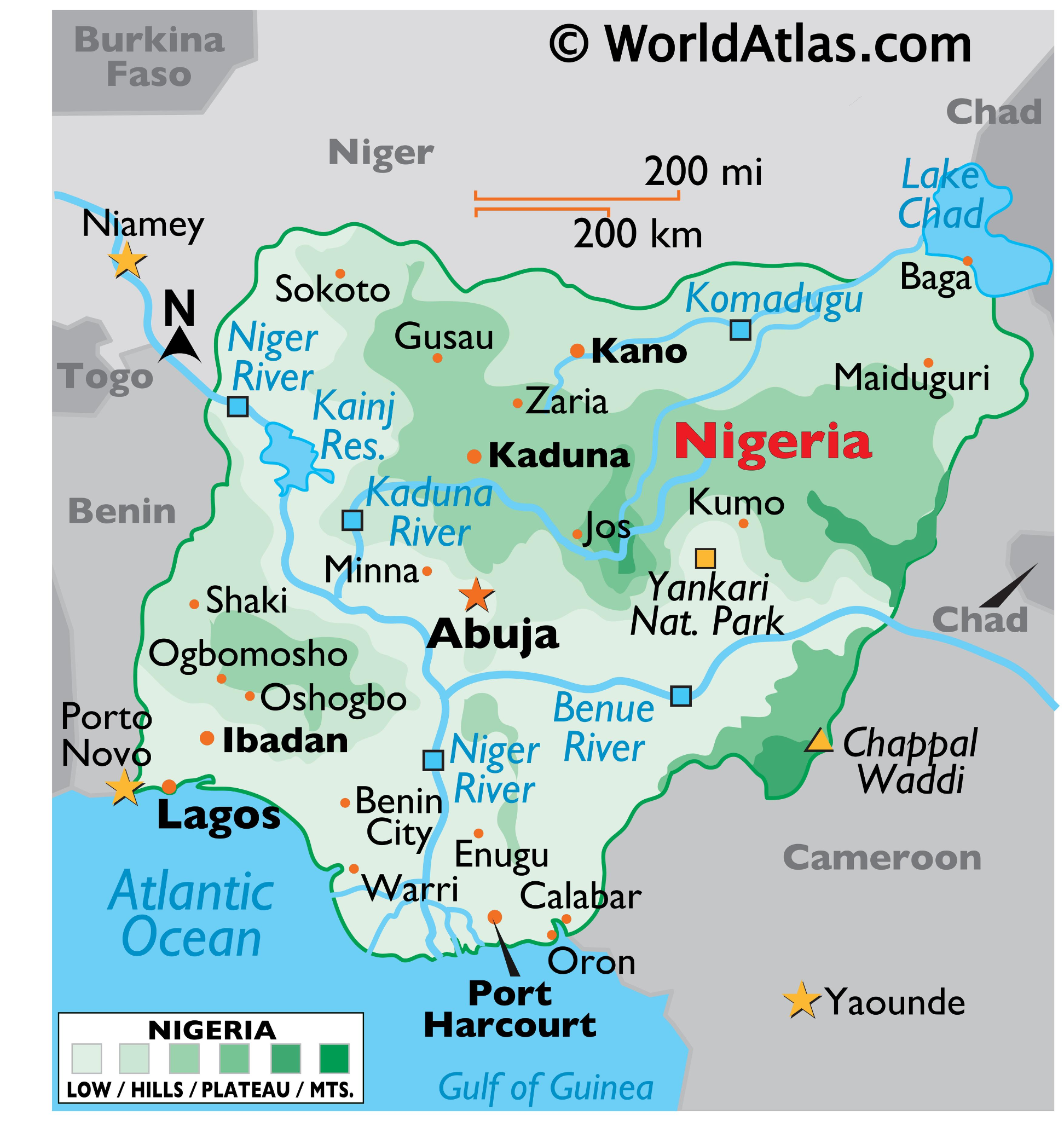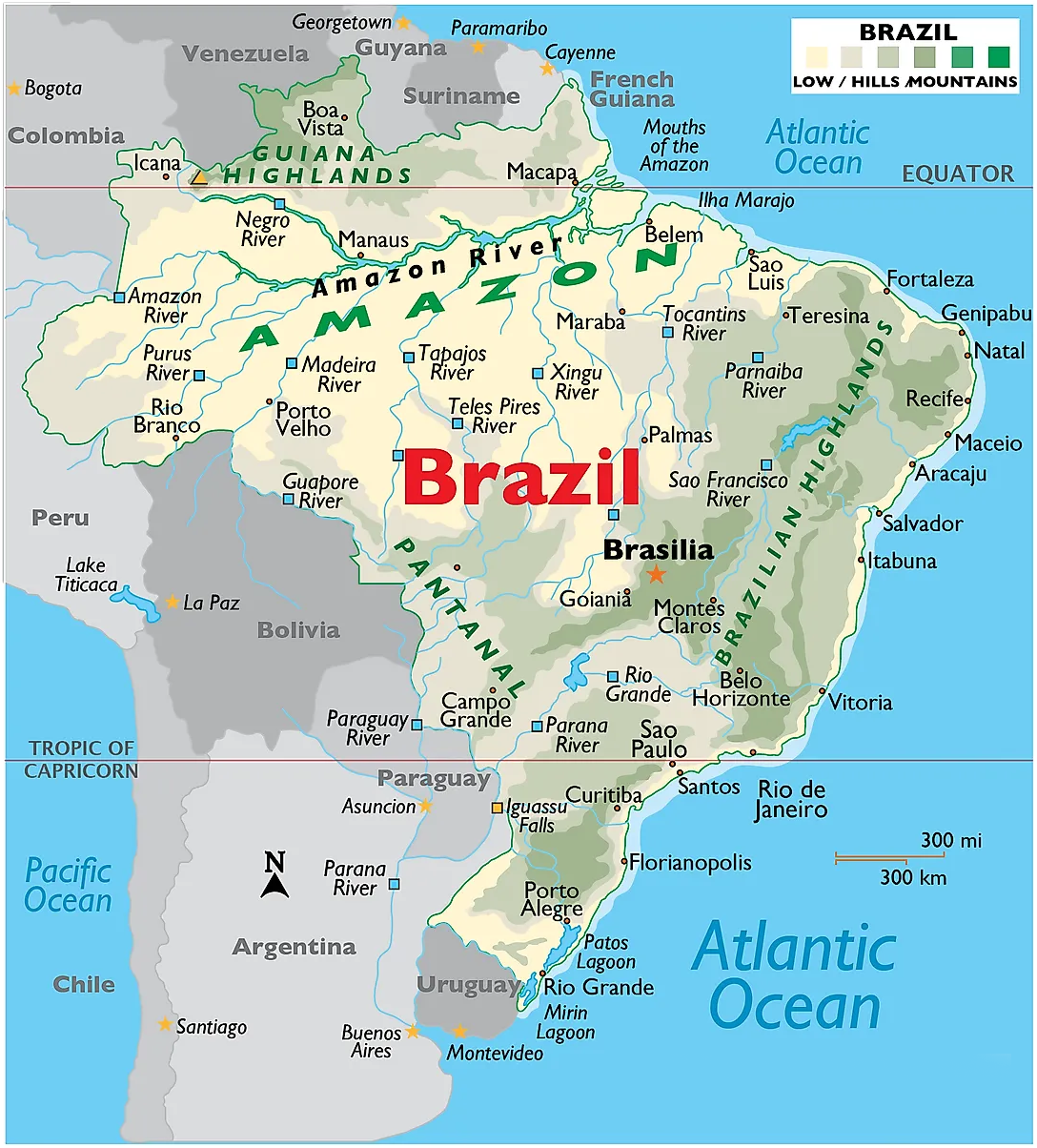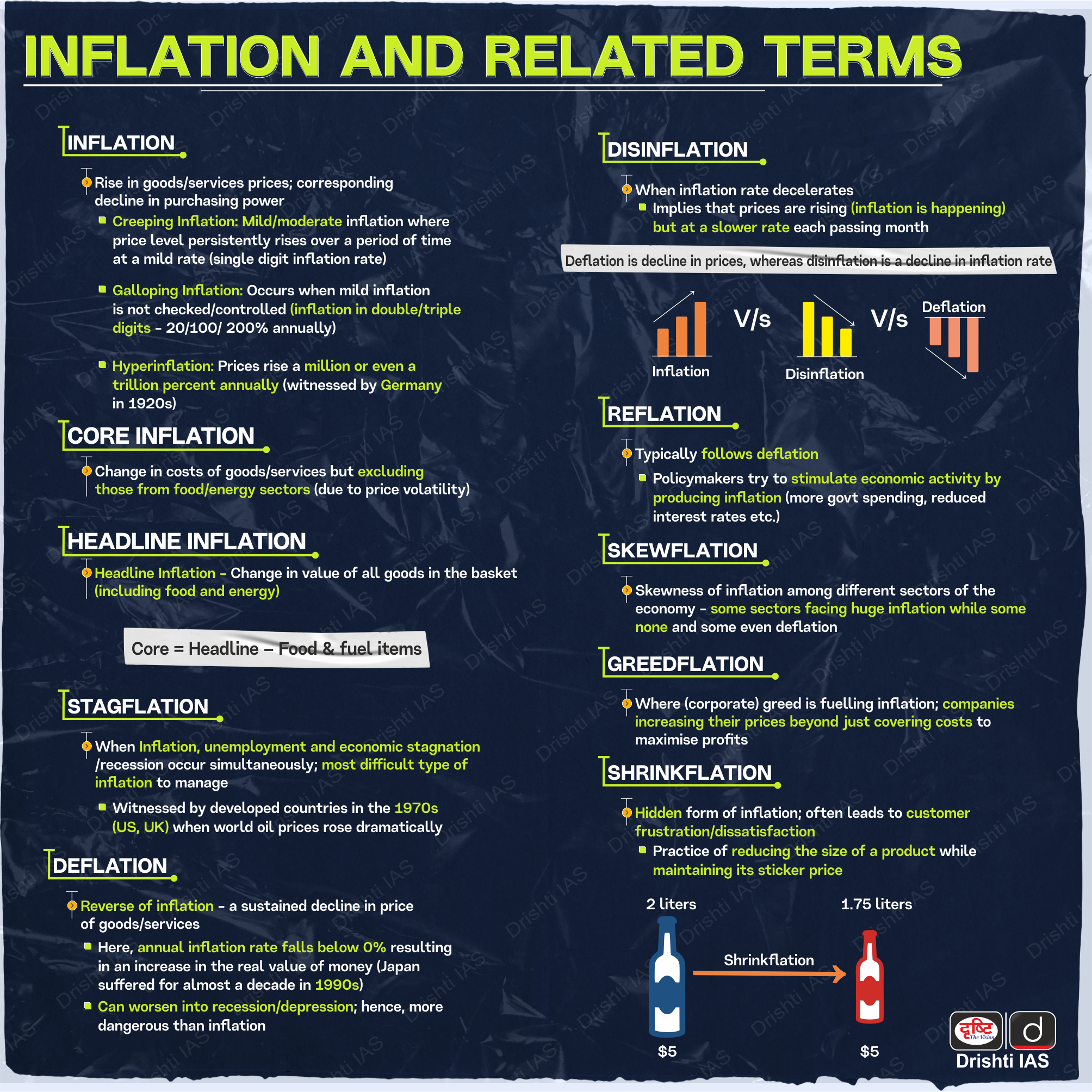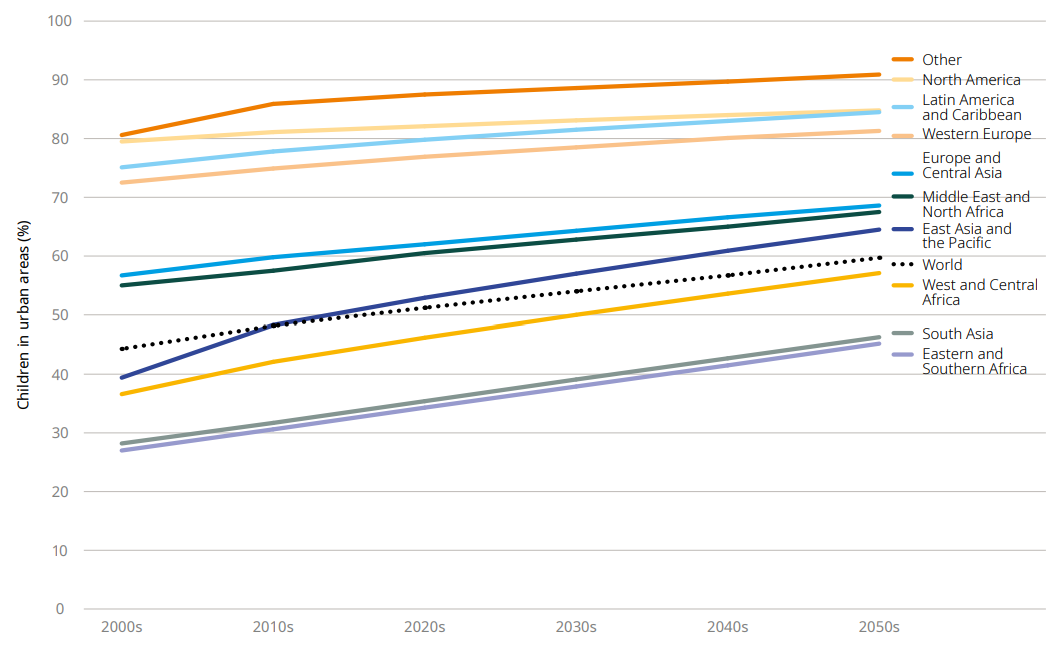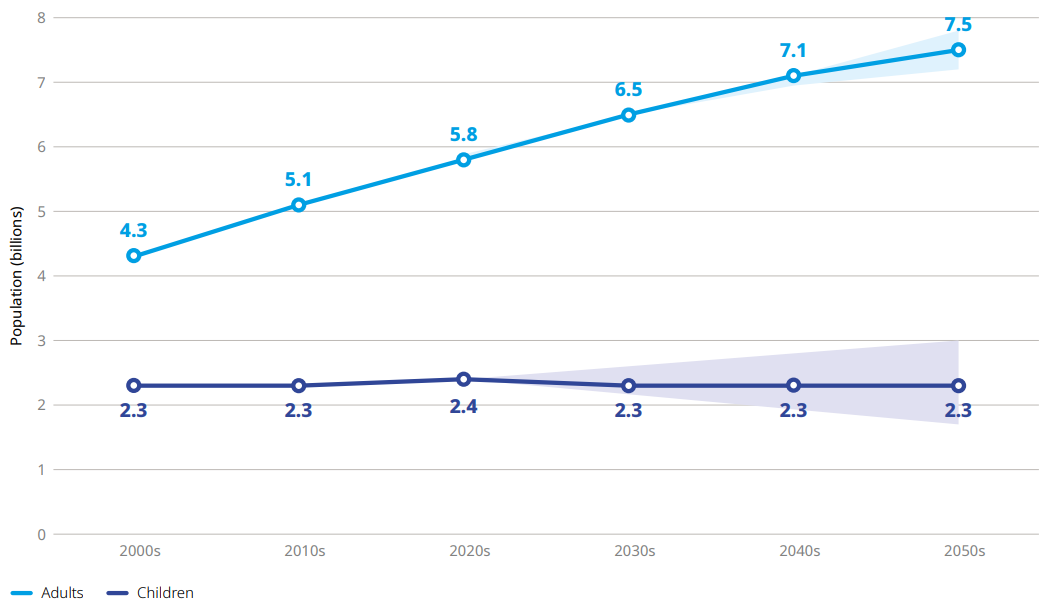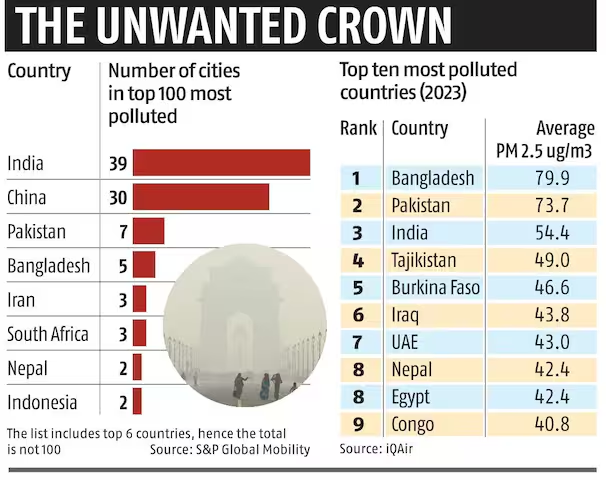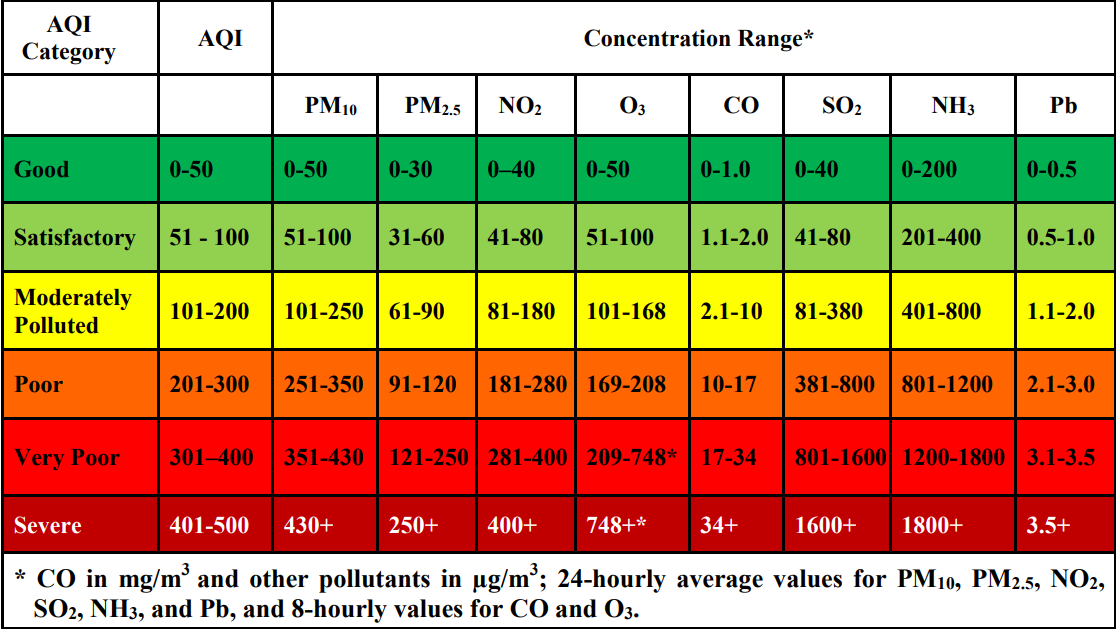Infographics
International Relations
PM's Visit to Nigeria, Brazil and Guyana
For Prelims: India-Brazil Relations, WTO, Caribbean Community (CARICOM), Line of Credit BRICS, IBSA, G4, G20, Africa, African Continental Free Trade Area, African Union, India’s 2023 G20 Presidency, International Solar Alliance, Indian Ocean Region, Rare earth elements
For Mains: Areas of Cooperation between India and Brazil, India’s relations with Nigeria and Guyana, Significance of Africa for India.
Why in News?
Recently, the Prime Minister of India has commenced a significant three-nation visit to Nigeria (Africa), Brazil, and Guyana in South America.
- Following his visit to Nigeria, the PM travelled to Brazil to participate in the 19th G20 Summit and subsequently proceeded to Guyana.
What are the Key Highlights of India-Nigeria Relations?
- Recent Diplomatic Engagement:
- The recent visit by the Indian Prime Minister (PM) to Nigeria in November 2024 marked a significant moment in bilateral relations, being the first visit by an Indian prime minister in 17 years.
- During this visit, his reception included the conferral of Nigeria’s second-highest national award, the Grand Commander of the Order of Niger.
- The recent visit by the Indian Prime Minister (PM) to Nigeria in November 2024 marked a significant moment in bilateral relations, being the first visit by an Indian prime minister in 17 years.
- India-Nigeria Relations:
- Historical Ties: India established its diplomatic presence in Lagos in 1958, just two years before Nigeria gained independence from British colonial rule in 1960, marking the beginning of their bilateral relationship.
- In 2007, both nations elevated their relationship to a "Strategic Partnership".
- Cultural and Educational Exchange: India has played a significant role in Nigeria's development, especially in the fields of education and healthcare.
- India established the National Defence Academy in Kaduna and the Naval War College in Port Harcourt, contributing to Nigeria’s military training and capacity-building.
- Economic Engagement: India-Nigeria economic ties hold significant importance, with over 200 Indian companies investing approximately USD 27 billion across key sectors such as manufacturing, telecommunications, and pharmaceuticals.
- This robust partnership positions India as the second-largest employer in Nigeria after the Federal Government.
- Developmental Assistance: India has positioned itself as a key development partner for Nigeria, offering developmental assistance through concessional loans totalling USD 100 million.
- This assistance reflects India's commitment to supporting Nigeria’s socio-economic development and aligns with India's broader vision of fostering growth in the Global South.
- Regional Influence: Nigeria, known as the "Giant of Africa," has Africa's largest population (~220 million) and the largest economy in the continent.
- As a founding member of the African Union (AU), Nigeria plays a pivotal role in African politics and regional stability.
- Strategic Interests: India seeks stronger ties with Nigeria to counter China's growing influence, as China has become Africa's largest trading partner over the past two decades.
- India acknowledges Africa's wealth of critical minerals, which are essential for industries like electric vehicles and vital for India's economic goals.
- Focus on Common Challenges: Both nations share common challenges such as terrorism, separatism, piracy, and drug trafficking.
- Cultural Significance: The relationship is enriched by a large Indian expatriate (about 60,000) community in Nigeria, which is the largest in West Africa.
- This fosters cultural ties and economic collaboration through cultural exchanges, educational initiatives, and people-to-people interactions.
- Historical Ties: India established its diplomatic presence in Lagos in 1958, just two years before Nigeria gained independence from British colonial rule in 1960, marking the beginning of their bilateral relationship.
- Opportunities in India-Nigeria Relations:
- Healthcare Cooperation: India is the leading destination for Nigerian medical tourists, with affordable and quality healthcare services.
- Defence Collaboration: Nigeria seeks enhanced defence cooperation with India in areas like training, equipment supply, and counter-insurgency strategies, particularly to combat groups like Boko Haram.
- Business and Economic Cooperation: To boost trade and investment, forming an India-Nigeria Business Council with leading business houses from both countries could help identify and develop new opportunities.
Nigeria
- Location: Western coast of Africa, often called the "Giant of Africa."
- Borders: North – Niger, East – Chad and Cameroon, South – Gulf of Guinea, West – Benin.
- Independence: Gained independence from Britain in 1960.
- Official Language: English; local languages include Hausa, Yoruba, Igbo, and Ijaw.
- Geography: Diverse, with climates ranging from arid to humid equatorial.
- Drainage: Major basins include Niger-Benue, Lake Chad, and Gulf of Guinea. The Niger River and its largest tributary, the Benue River, are principal rivers.
What are the Key Highlights of India-Brazil Relations?
- Recent Diplomatic Engagement:
- India and Brazil held bilateral discussions on the sidelines of the 19th G20 Summit in Rio de Janeiro, Brazil.
- Both nations focused on strengthening cooperation in sectors such as energy, biofuels, defence, agriculture, healthcare, and digital technology.
- India expressed strong support for Brazil's ‘Global Alliance against Hunger and Poverty’ initiative and appreciated Brazil's leadership during its G20 Presidency.
- Brazil emphasised the urgency of addressing global climate challenges, calling for decisive action at UNFCCC COP29 climate talks in Azerbaijan, ahead of the COP30 summit in Belem, Brazil, in 2025.
- Brazil supports India's candidature for a non-permanent seat of the UNSC for the 2028-2029 term.
- India-Brazil Relations:
- Institutional Engagements:
- India and Brazil share a robust and multifaceted relationship, marked by collaborations at bilateral and multilateral levels through platforms such as BRICS, IBSA, G4, G20, BASIC, International Solar Alliance (ISA), WTO, UNESCO, and WIPO.
- Institutional mechanisms like the Strategic Dialogue led by National Security Advisors (NSA), India-Brazil Business Leaders Forum, Economic and Financial Dialogue, and Joint Committee on Science & Technology foster collaboration on trade, defence, science, and economic policy.
- Trade and Investment:
- Bilateral trade between the two nations reached USD 15.2 billion in 2022.
- In 2021, India became the 5th largest trading partner of Brazil with investments spanning sectors such as automobiles, IT, mining, energy, and biofuels.
- The Preferential Trade Agreement (PTA) signed with MERCOSUR (Brazil, Argentina, Uruguay, Paraguay) in 2004 further strengthens economic ties.
- Defence Cooperation:
- Defence cooperation is anchored by a 2003 agreement and institutionalised through Joint Defence Committee (JDC) meetings.
- Strategic Dialogue addresses defence and global issues, while a 2020 MoU on Cyber Security with CERT-In highlights cyber cooperation.
- Energy Security:
- Energy security is a vital area, with a 2020 MoU between Indian Oil Corporation and Brazil’s CNPEM promoting bioenergy research.
- Both countries, along with the US, launched the Global Biofuel Alliance (GBA) during the G20 summit in 2023 to enhance biofuel production and demand.
- Brazil's expertise in ethanol production supports India’s Ethanol Blending Programme, with Brazil achieving a 27% blend and India targeting 20% by 2025-26, building on its current 15.83%.
- Institutional Engagements:
What are the Key Areas of Engagement Between India and Guyana?
- Recent Diplomatic Engagement:
- The PM's recent visit to Guyana, the first in 56 years, shows India's renewed interest in the Caribbean and Latin America, supported by historical ties with the Indian diaspora and Guyana's growing oil sector.
- India-Guyana Relations:
- Historical and Diplomatic Ties:
- India established its diplomatic presence in Guyana with the Commission of India in 1965, upgraded to a full-fledged High Commission in 1968.
- Guyana reciprocated by reopening its mission in India in 2004 after economic constraints led to its closure in 1990.
- Development Cooperation and Technical Assistance:
- India provides developmental support through the Indian Technical and Economic Cooperation (ITEC) program, offering scholarships in diverse fields.
- The ICCR scholarship program also facilitates academic exchange, with over 600 Guyanese scholars trained under these schemes.
- India provides developmental support through the Indian Technical and Economic Cooperation (ITEC) program, offering scholarships in diverse fields.
- Economic and Trade Relations:
- Indian companies are exploring opportunities in biofuel, energy, minerals, and pharmaceuticals.
- The Joint Business Council between FICCI and the Georgetown Chamber of Commerce facilitates economic cooperation.
- Guyana has engaged actively with India in renewable energy projects, particularly under the International Solar Alliance (ISA). Bilateral collaboration extends to solar energy, biofuels, and sustainable development initiatives.
- Cultural and People-to-People Ties:
- Guyana, with a population where approximately 43.5% are of Indian origin, represents one of the oldest Indian diasporas, having migrated over 185 years ago.
- Cricket serves as a unifying force, with Guyanese players participating in the Indian Premier League (IPL).
- Ayurveda and yoga are gaining popularity, further enhancing cultural connections.
- Competition from China:
- India's efforts to strengthen ties with Guyana face competition from China, which has a significant presence through Belt and Road Initiative (BRI) projects.
- While India committed USD 100 million to a road project in Georgetown, China's larger investments dominate, despite mixed local sentiments about Chinese practices and benefits.
- Historical and Diplomatic Ties:
Guyana
- Capital: Georgetown
- Colonised by the UK: Guyana gained independence from the United Kingdom (UK) in 1966 and became a republic in 1970.
- Geography: Located on the northern coast of South America, bordered by Venezuela, Brazil, and Suriname, with the Atlantic Ocean to the north.
- Major Rivers: Essequibo River (largest), Demerara River, and Berbice River.
- Mountains: Pakaraima Mountains, Kanuku Mountains, Acarai Mountains.
PM Received Top National Awards from Guyana, Barbados and Dominica
- The PM of India received the highest national honours from Guyana (Order of Excellence), Barbados (Honorary Order of Freedom of Barbados) and Dominica (Dominica Award of Honour).
- PM was conferred with Dominica's highest National Award for his statesmanship, support to Dominica during the Covid-19 pandemic, and commitment to strengthening India-Dominica ties.
- With these awards, PM international recognition tally now stands at 19.
|
Drishti Mains Question: Examine the key opportunities and challenges in strengthening India-Africa relations in the context of global strategic and economic shifts. |
UPSC Civil Services Examination, Previous Year Questions (PYQs)
Prelims
Q. In which one of the following groups are all the four countries members of G20? (2020)
(a) Argentina, Mexico, South Africa and Turkey
(b) Australia, Canada, Malaysia and New Zealand
(c) Brazil, Iran, Saudi Arabia and Vietnam
(d) Indonesia, Japan, Singapore and South Korea
Ans: (a)
Mains
Q. ‘The long-sustained image of India as a leader of the oppressed and marginalised nations has disappeared on account of its new found role in the emerging global order.’ Elaborate. (2019)


Indian Economy
Rising Inflation in India
For Prelims: Consumer Price Index, Consumer Food Price Index , Reserve Bank of India, Food inflation, Heatwaves, Central Statistical Office
For Mains: Economic Impact of Inflation, Monetary Policy and Inflation Management
Why in News?
The Ministry of Statistics & Programme Implementation (MoSPI) recently reported that the Consumer Price Index (CPI) or the retail inflation surged to 6.2% in October 2024 and the Food inflation, as per the Consumer Food Price Index (CFPI), rose to 10.87%.
- This marks the highest inflation rate since August 2023, surpassing the Reserve Bank of India's (RBI) upper tolerance limit of 6%.
- Despite global inflation easing, India faces persistent price pressures, leading experts to reassess forecasts and interest rate impacts.
What Factors have Contributed to High Retail Inflation in India?
- High Food Inflation: A significant contributor to the surge was food inflation, which hit a 15-month high at 10.8%.
- Vegetable prices shot up by 42%, marking a 57-month high. Fruit prices rose by 8.4%, and pulses saw a 7.4% increase.
- Core Inflation Uptrend: Core inflation, which excludes food and fuel prices, has also edged upwards, signaling persistent inflationary pressure beyond just food.
- Inflation in household services is climbing, reflecting higher living costs.
- Global Price Volatility: A sharp rise in global edible oil prices, driven by supply disruptions and other international market factors, has directly impacted India's inflation.
- Since India is a major importer of edible oils, any increase in global prices results in higher costs for domestic consumers, contributing to food inflation.
- Extreme Weather Events: Heatwaves have negatively impacted crop yields, leading to supply shortages and higher prices
What are the Implications of High Retail Inflation on RBI’s Monetary Policy?
- Delay in Interest Rate Cuts: The RBI inflation target is 4%, with a tolerance band of 2% to 6%. With inflation exceeding this threshold, immediate interest rate cuts are unlikely.
- Experts predict that the RBI might only consider reducing rates in 2025 if inflation shows a sustained decline.
- Focus on Inflation Control: The RBI will continue to prioritize controlling inflation to maintain price stability, as unchecked inflation undermines economic growth and purchasing power.
- The RBI had projected inflation to moderate to 4.8% in Q3 and 4.2% in Q4 of FY 2024-25, but this now seems less likely, affecting the future trajectory of interest rates.
- RBI’s Policy Dilemma: The RBI faces a difficult decision, while it must curb inflation, it must also avoid stifling economic growth. Rising food prices and supply disruptions are major contributors to inflation, complicating policy decisions.
- Given the persistent inflationary pressures, the RBI may adopt a cautious approach, waiting for inflation to decline before adjusting interest rates. Alternatively, it could implement a tight monetary policy, which, while controlling inflation, may also impact economic growth.
- Potential Risks of Unchecked Inflation: The RBI stated that continued inflation could undermine the real economy, particularly industry and exports.
- If rising input costs are passed on to consumers, it could reduce consumer demand and negatively impact corporate earnings.
- This may especially affect sectors like manufacturing, which rely on stable input costs and margins.
Note:
The Monetary Policy Framework Agreement (MPFA) between the Government of India and the RBI aims to maintain price stability while considering growth.
- According to this agreement, if inflation stays outside the 2% to 6% range for three consecutive quarters, the RBI must report to the central government, explaining the reasons, proposing corrective actions, and estimating when inflation will return to the target range.
What is the Consumer Price Index?
- About: The CPI measures the change in retail prices of goods and services commonly purchased by households for daily consumption.
- It is used to track inflation, with the base year for the CPI being 2012.
- Purpose: CPI is a widely used macroeconomic indicator of inflation, used by governments and central banks for inflation targeting and price stability monitoring, and as deflators in national accounts.
- CPI is also used to index dearness allowance to employees for increases in prices.
- CPI helps understand the cost of living, purchasing power, and the expensiveness of goods and services.
What is the Consumer Food Price Index?
- CFPI measures inflation that focuses exclusively on the price changes of food items in a consumer's basket.
- CFPI tracks price changes of a basket of commonly consumed food items like cereals, vegetables, fruits, dairy, meat, and other staples.
- Like the CPI, the CFPI is calculated monthly with the base year presently used as 2012.
- The Central Statistical Office (CSO), MOSPI releases CFPI for three categories (rural, urban, and combined) separately on an all-India basis.
|
Drishti Mains Question: Examine the implications of high retail inflation on the Reserve Bank of India’s monetary policy. |
UPSC Civil Services Examination, Previous Year Questions (PYQs)
Prelims
Q 1. The lowering of Bank Rate by the Reserve Bank of India leads to (2011)
(A) More liquidity in the market
(B) Less liquidity in the market
(C) No change in the liquidity in the market
(D) Mobilization of more deposits by commercial banks
Ans: A
Q.2 Consider the following statements: (2020)
- The weightage of food in Consumer Price Index (CPI) is higher than that in Wholesale Price Index (WPI).
- The WPI does not capture changes in the prices of services, which CPI does.
- Reserve Bank of India has now adopted WPI as its key measure of inflation and to decide on changing the key policy rates.
Which of the statements given above is/are correct?
(a) 1 and 2 only
(b) 2 only
(c) 3 only
(d) 1, 2 and 3
Ans: (a)
Q 3. If the RBI decides to adopt an expansionist monetary policy, which of the following would it not do? (2020)
- Cut and optimize the Statutory Liquidity Ratio
- Increase the Marginal Standing Facility Rate
- Cut the Bank Rate and Repo Rate
Select the correct answer using the code given below:
(A) 1 and 2 only
(B) 2 only
(C) 1 and 3 only
(D) 1, 2 and 3
Ans: B


Social Justice
The State of the World's Children 2024
For Prelims: United Nations International Children's Emergency Fund (UNICEF), World’s Children 2024, mRNA Vaccine, Children’s Climate Risk Index (CCRI) 2021, Mission LIFE, the National Action Plan on Climate Change, Swachh Bharat Mission, Jal Jeevan Mission, The Convention on the Rights of the Child, 1989, United Nations, Nobel Prize for Peace, SDGs, National Adaptation Plans, Nationally Determined Contributions.
For Mains: Sustainable development of children and climate change.
Why in News?
Recently, the United Nations International Children's Emergency Fund (UNICEF) released the State of the World’s Children 2024 (SOWC 2024) report that examines the forces and trends shaping children’ future by 2050.
- The report highlights three megatrends shaping children's lives by 2050 i.e., demographic shifts, climate crises, and frontier technologies.
What are the Key Findings of the SOWC 2024 Report?
- Child survival: Global newborn survival rates stand at over 98%, while the likelihood of a child surviving to age 5 stands at 99.5%.
- Life expectancy increases from 70 years for girls and 66 for boys born in the 2000s, to 81 years and 76 years, respectively.
- Climate Hazards: Children are projected to be exposed to extreme weather events at significantly higher rates: 8 times more to heatwaves, 3.1 times more to river floods, 1.7 times more to wildfires, 1.3 times more to droughts, and 1.2 times more to tropical cyclones.
- Socioeconomic conditions: 23% of the world’s children are projected to live in the 28 countries currently classified as low-income, more than double the share in these countries in the 2000s (11%).
- Education:
- The global education gap between girls and boys is expected to narrow, with more girls completing upper secondary education in some regions.
- Gender Equality: By the 2050s, gender inequality is expected to reduce in children's lives globally.
- However, many children are projected to live with high gender inequality in Eastern and Southern Africa and West and Central Africa.
- Conflict Exposure: The number of children living in conflict-prone areas is projected to drop from more than 833 million in the 2000s to 622 million in the 2050s.
- Urbanisation: Nearly 60% of children globally are projected to live in urban areas in the 2050s, up from 44% in the 2000s.
What are the Megatrends that are Shaping Children's Lives?
- Demographic Shift: By 2050, the global child population is expected to stabilise at 2.3 billion. Child populations will grow in South Asia, Eastern and Southern Africa, and West and Central Africa.
- Africa's child population share is expected to fall below 40% (from 50% in the 2000s), while it will drop below 19% in East Asia, Western Europe, and North America.
- Climate Crisis: Nearly 1 billion children live in countries with high exposure to climate hazards, such as pollution, extreme weather, and biodiversity loss.
- Children's developing bodies are particularly vulnerable to pollution and extreme weather, with their brains, lungs, and immune systems at risk even before birth.
- Since 2022, 400 million students around the world have experienced school closures due to extreme weather.
- Frontier Technologies: Artificial intelligence (AI), neurotechnology, next-generation renewable energy and mRNA vaccine breakthroughs could significantly improve childhood in the future.
- However, While over 95% of people in high-income countries are internet-connected, only 26% in low-income countries have access.
What are India-Specific Findings of the SOWC 2024 Report?
- Child Population: By 2050, India is expected to have the largest child population, with about 350 million children, making up 15% of the global total.
- India, China, Nigeria and Pakistan together are expected to account for more than a third of the world’s population of children by 2050.
- Climate Risks: India ranks 26th out of 163 countries on the Children’s Climate Risk Index (CCRI) 2021, reflecting high exposure to climate-related hazards.
- Indian children face significant risks from extreme heat, floods, droughts, and air pollution.
- CCRI is released by UNICEF that ranks countries based on children's exposure to climate shocks like cyclones and heatwaves, and their vulnerability due to access to essential services.
Note:
UNICEF has been collaborating with the government of India for the past 75 years, and in 1992, India ratified The Convention on the Rights of the Child, 1989.
- The United Nations Convention on the Rights of the Child was adopted in 1989 to protect and fulfil children’ rights.
UNICEF
- About: UNICEF is a leading global organisation that works to ensure that every child survives, thrives, and fulfils their potential, regardless of their background or where they live.
- UNICEF's work is impartial, non-political, and neutral and it operates in over 190 countries and territories.
- Establishment: It was established in 1946 in the aftermath of World War II to help children whose lives and futures were at risk – no matter what role their country had played in the war.
- UNICEF became a permanent part of the United Nations in 1953.
- Core Activities: Education, health, and nutrition, Child protection, Clean water and sanitation and Climate change and disease.
- UNICEF is guided by the Convention on the Rights of the Child, 1989.
- Recognition: It was awarded the Nobel Prize for Peace in 1965 for “promotion of brotherhood among the nations”.
- Strategic Plan (2022–2025): It drives coordinated efforts for an inclusive Covid-19 recovery, faster progress toward the SDGs, and a society where every child is included, empowered, and has their rights fulfilled.
How to Secure Children’ Future as per the SOWC 2024 Report?
- Prepare for Demographic Transitions: Ensure access to maternal, newborn, child and adolescent healthcare, along with sexual and reproductive health and family planning services.
- Create child-friendly cities with safe spaces, infrastructure, and support for marginalised children, including those with disabilities.
- Invest in Climate, Mitigation and Education: Ensure children’s needs are addressed in National Adaptation Plans, Nationally Determined Contributions and other climate strategies.
- Integrate climate resilience into local planning, including schools, healthcare, social services, and water and sanitation.
- Connectivity and Safe Design: Promote digital literacy and skills among children and educators to complement traditional teaching.
- Implement rights-based governance for new technologies, with oversight mechanisms to anticipate risks.
Conclusion
The UNICEF State of the World’s Children 2024 report emphasises the need for proactive planning and climate adaptation to secure a sustainable future for children. Ensuring access to healthcare, education, and digital opportunities, while addressing environmental risks, is essential to protect children’s rights and promote their well-being globally.
|
Drishti Mains Question: Discuss the impact of climate change on children’s future, especially in India, and the role of government initiatives in mitigating these risks. |
UPSC Civil Services Examination, Previous Year Question (PYQ)
Prelims
Q. With reference to the United Nations Convention on the Rights of the Child, consider the following: (2010)
- The Right to Development
- The Right to Expression
- The Right to Recreation
Which of the above is/are the Rights of the child?
(a) 1 only
(b) 1 and 3 only
(c) 2 and 3 only
(d) 1, 2 and 3
Ans: (d)
Mains
Q. Hunger and Poverty are the biggest challenges for good governance in India still today. Evaluate how far successive governments have progressed in dealing with these humongous problems. Suggest measures for improvement. (2017)
Q. Examine the main provisions of the National Child Policy and throw light on the status of its implementation. (2016)


Biodiversity & Environment
Tackling Air Pollution
For Prelims: Indo-Gangetic Plain, Air Quality Index (AQI), Environmental Protection Agency (EPA), PM 10, PM 2.5, Nitrogen Dioxide (NO2), Sulphur Dioxide (SO2), Carbon Monoxide (CO), Ozone (O3), Ammonia (NH3), Lead (Pb), Heavy Metals, Graded Response Action Plan, Commission for Air Quality Management (CAQM).
For Mains: Challenges posed by air pollution and ways to tackle them.
Why in News?
The Indo-Gangetic Plain, encompassing Delhi, Bihar, Chandigarh, Haryana, Punjab, Uttar Pradesh, and West Bengal, has recently been severely affected by intense air pollution.
- For instance, in Delhi, the Air Quality Index (AQI) rose to approximately 500, highlighting the severe air pollution challenge in the IGP, which is home to 9% of the global population and 40% of India's population.
What is the Status of Air Pollution in India?
- Leads in Worst-Polluted Cities: India has the highest number of cities in the top 100 most polluted cities globally, with 39 cities ranked among them, surpassing China, which has 30 cities in the list.
- Regional Comparison: Other South Asian countries contribute significantly to global pollution, with Pakistan having 7 cities, Bangladesh 5, and Nepal 2 cities in the top 100.
- 53 of the top 100 polluted cities are in the Indian subcontinent.
- Life Expectancy Reduction: According to a 2019 study by the Energy Policy Institute at the University of Chicago (EPIC), residents of IGP have an average life expectancy shorter by seven years compared to other parts of the country due to severe air pollution.
What is AQI?
- About: AQI is a numerical scale used to measure and communicate the quality of air based on the concentration of major pollutants.
- It was established by the Environmental Protection Agency (EPA).
- Categories: There are six AQI categories:
- Good, Satisfactory, Moderately polluted, Poor, Very Poor, and Severe.
- Pollutants Covered: AQI considers eight pollutants namely PM 10, PM 2.5, Nitrogen Dioxide (NO2), Sulphur Dioxide (SO2), Carbon Monoxide (CO), Ozone (O3), Ammonia (NH3), and Lead (Pb).
- Scale of AQI: The AQI ranges from 0 to 500, with higher values indicating worse air quality and greater health risks.
- Effects of Bad Air Quality:
- Short-Term Effects: Symptoms such as headaches, nasal congestion, and skin irritation are common when exposed to poor air quality.
- Conditions like asthma, allergic rhinitis, and pneumonia may be triggered or worsened by high levels of pollutants.
- Long-Term Health Risks:
- Chronic Respiratory Diseases: Asthma, chronic obstructive pulmonary disease (COPD), and even lung cancer.
- Cardiovascular Health: Like heart attacks, strokes, heart failure, and hypertension.
- Cognitive Decline: Cognitive decline, dementia, and strokes, particularly in older adults.
- Skin: Eczema and dermatitis.
- Internal Organ Damage: Damage to internal organs, including the kidneys and liver.
- Impact on Vulnerable Groups:
- Pregnant Women: Disrupt placental development, harm foetal growth, and cause long-term health issues in children.
- Children: Hinder neurological development, affecting cognitive and physical growth.
- Short-Term Effects: Symptoms such as headaches, nasal congestion, and skin irritation are common when exposed to poor air quality.
What are the Causes of Air Pollution?
- Temperature Inversions: It occurs in November and December when cold air mixes with pollutants, trapping them near the ground. This exacerbates air pollution by preventing the dispersion of harmful particles.
- Traffic Congestion: Traffic congestion is a key contributor to air pollution, with Mumbai having the highest vehicle density per kilometre, followed by Kolkata, Pune, and Delhi.
- In densely populated urban areas, heavy traffic not only exacerbates air pollution but also hinders efforts to improve air quality through cleaner technologies and more efficient urban planning.
- For example, in cities like Delhi, despite the introduction of electric buses and stricter emission norms, traffic congestion continues to undermine air quality improvements.
- Stubble Burning and Desert Dust: The widespread burning of crop residues releases smoke, carbon dioxide, and particulate matter, significantly worsening air quality.
- Additionally, winds from the Thar Desert bring fine dust particles into the region, further intensifying air pollution.
- Fireworks: The burning of fireworks releases toxic chemicals, heavy metals, and fine particulate matter into the air, which contribute to short-term surges in air pollution and deteriorating air quality.
- Biomass Burning: In rural areas, the reliance on traditional methods of cooking and heating, such as using firewood, biomass fuels, or coal, contributes to both indoor and outdoor air pollution.
What are the Initiatives Related to Controlling Air Pollution in India?
- National Clean Air Programme
- System of Air Quality and Weather Forecasting and Research (SAFAR) Portal
- New Commission for Air Quality Management
- Graded Response Action Plan (for Delhi)
- For Reducing Vehicular Pollution:
WHO’s 4 Pillar Strategy
- WHO adopted a resolution in 2015 to address the adverse health effects of air pollution adopting a 4 Pillar Strategy.
- Those four pillars are:
- Expanding the knowledge base
- Monitoring and reporting
- Global leadership and coordination
- Institutional capacity strengthening
Way Forward
- Waste-to-Energy Technologies: Invest in waste-to-energy plants that convert non-recyclable waste into energy through processes like incineration or anaerobic digestion.
- Incineration is a thermal process that burns waste at high temperatures to reduce its volume, while anaerobic digestion is a biological process where microorganisms break down organic waste without oxygen.
- Covering Construction Sites: Measures like vertically covering the construction area, covering raw materials, use of water spray and windbreaker to prevent sand and dust from dispersing and covering construction materials can significantly improve air quality.
- De-SOx-ing and De-NOx-ing Systems: To limit pollutants like sulphur dioxide (SO2) and nitrogen oxides (NOx), plants and refineries need to install De-SOx-ing and De-NOx-ing systems that remove SO2 and NOx respectively.
- Alternative Biomass Uses: Instead of burning, the residue can be used for energy production, biogas generation and feeding cattle.
- Shift Toward Electrification: Promoting electric, hybrid, and BS-VI vehicles, along with improving public transport, can reduce vehicular emissions significantly.
- Vapour Recovery Systems: Petrol vapours, containing volatile organic compounds (VOCs), contribute to smog and pose health risks during storage unloading and refuelling.
- Vapour recovery systems capture VOCs to reduce emissions.
|
Drishti Mains Question: Critically analyse the factors contributing to severe air pollution in the Indo-Gangetic Plain. Suggest measures to address the issue effectively. |
UPSC Civil Services Examination Previous Year Question (PYQ)
Prelims
Q. Which of the following are the reasons/factors for exposure to benzene pollution? (2020)
- Automobile exhaust
- Tobacco smoke
- Wood burning
- Using varnished wooden furniture
- Using products made of polyurethane
Select the correct answer using the code given below:
(a) 1, 2 and 3 only
(b) 2 and 4 only
(c) 1, 3 and 4 only
(d) 1, 2, 3, 4 and 5
Ans: (a)
Q. In the context of solving pollution problems, what is/are the advantage/advantages of bioremediation techniques? (2017)
- It is a technique for cleaning up pollution by enhancing the same biodegradation process that occurs in nature.
- Any contaminant with heavy metals such as cadmium and lead can be readily and completely treated by bioremediation using microorganisms.
- Genetic engineering can be used to create microorganisms specifically designed for bioremediation.
Select the correct answer using the code given below:
(a) 1 only
(b) 2 and 3 only
(c) 1 and 3 only
(d) 1, 2 and 3
Ans: (c)
Mains
Q. Describe the key points of the revised Global Air Quality Guidelines (AQGs) recently released by the World Health Organisation (WHO). How are these different from its last update in 2005? What changes in India’s National Clean Air Programme are required to achieve revised standards? (2021)
Q. What are the key features of the National Clean Air Programme (NCAP) initiated by the government of India? (2020)


Important Facts For Prelims
Allotropes of Carbon
Why in News?
Carbon and its allotropes remain in news due to its varied physical and chemical properties.
- Allotrope refers to one or more forms of a chemical element that occur in the same physical state.
- Carbon has four main allotropes namely Diamond, Graphite, Fullerenes, and Graphene.
- Additionally, carbon nanotubes and amorphous carbon (like charcoal) are also considered forms of carbon, but they are less commonly classified as primary allotropes.
What are the Allotropes of Carbon?
- Graphite: In graphite, each carbon atom forms bonds with three other carbon atoms, creating two-dimensional sheets. It is made up of layers of Carbon atoms arranged in hexagonal arrays.
- Electricity Conduction: Graphite is a good conductor of electricity due to the existence of delocalised electrons within its layers.
- Lubricant: Its layers can easily slide over each other, making it suitable as a solid lubricant.
- Hardness: Graphite is the softest carbon allotrope.
- Graphene: Graphene is a single, one atom thick layer of graphite. It has vast potential in electronics, energy storage, sensors, coatings, composites, and biomedical devices.
- Its high surface area and biocompatibility make it ideal for drug delivery and tissue engineering.
- Diamond: It is made up of a three-dimensional network of Carbon atoms arranged in a tetrahedral structure, where each carbon atom is bonded to other four carbon atoms.
- Hardness: It is recognized as the hardest naturally occurring material due to its strong covalent bonds, making it suitable for industrial cutting, drilling, and grinding applications.
- Transparency: Some diamonds exhibit high transparency in the visible spectrum, making them valuable in jewellery.
- Thermal Conductivity: Diamonds possess excellent thermal conductivity, making them useful in heat sinks.
- Electricity Conduction: It lacks electrical conductivity in its pure form as it has no free electrons or "charge carriers" available to conduct electricity.
- Lab-grown Diamonds (LGDs): LGDs are identical to natural diamonds in terms of physical properties such as hardness, sparkle, and durability but are created artificially in laboratories using Graphite as a diamond seed.
- Fullerene: Buckminsterfullerene is a type of fullerene with the formula C60 and is characterised by its distinctive cage-like structure resembling a football.
- Applications: Fullerenes and their compounds have potential applications as semiconductors, superconductors, lubricants, catalysts, electric wires, and plastic reinforcing fibres.
- Carbon Nanotubes: They are cylindrical structures made of rolled-up graphene sheets.
- They are used in electronics, materials science, energy storage, medical applications, sensors, water purification, drug delivery, aerospace, and nanotechnology.
- They can be used as carriers of drugs and antigens in the human body and biochemical sensors.
- They are biodegradable in nature.
- Amorphous Carbon: It refers to various forms of carbon lacking a crystalline structure, such as charcoal, soot, and activated carbon.
UPSC Civil Services Examination, Previous Year Questions (PYQs)
Prelims
Q.With reference to carbon nanotubes, consider the following statements: (2020)
- They can be used as carriers of drugs and antigens in the human body.
- They can be made into artificial blood capillaries for an injured part of human body.
- They can be used in biochemical sensors.
- Carbon nanotubes are biodegradable.
Which of the statements given above are correct?
(a) 1 and 2 only
(b) 2, 3 and 4 only
(c) 1, 3 and 4 only
(d) 1, 2, 3 and 4
Ans: (c)
Q. Graphene is frequently in news recently. What is its importance? (2012)
- It is a two-dimensional material and has good electrical conductivity.
- It is one of the thinnest but strongest materials tested so far.
- It is entirely made of silicon and has high optical transparency
- It can be used as ‘conducting electrodes’ required for touch screens, LCDs and organic LEDs.
Which of the statements given above are correct?
(a) 1 and 2 only
(b) 3 and 4 only
(c) 1, 2 and 4 only
(d) 1, 2, 3 and 4
Ans: (c)


Important Facts For Prelims
One Day One Genome Initiative
Why in News?
Recently, the 'One Day One Genome' initiative was launched by the Department of Biotechnology (DBT) and Biotechnology Research and Innovation Council (BRIC).
- It was launched on the 1st foundation day of BRIC at the National Institute of Immunology (NII), New Delhi.
What is One Day One Genome Initiative?
- About: It is an initiative designed to highlight India’s unique microbial diversity and its role in the environment, agriculture, and human health, leveraging data from genome sequencing.
- Objective: It aims to publicly release a fully annotated bacterial genome from India, along with a detailed summary, infographics, and genome data.
- Coordination: It will be coordinated by Biotechnology Research and Innovation Council-National Institute of Biomedical Genomics (BRIC-NIBMG), an institute of the Department of Biotechnology.
- Potential Benefits:
- Understanding microbial functions can lead to better waste management and pollution control strategies.
- Insights into beneficial microbes can enhance crop yields and promote sustainable farming practices.
- Identifying microbes with antimicrobial properties may lead to new treatments and drugs.
Genome Sequencing
- About: The genome of an organism consists of a unique sequence of DNA or RNA made up of nucleotide bases. Determining the order of these bases is called genomic sequencing.
- Genome sequencing helps identify genome-encoded traits such as important enzymes, antimicrobial resistance, and bioactive compounds.
- Genome Sequencing Process:
- Extraction: DNA or RNA is extracted from cells of bacteria, viruses, or pathogens.
- Library Preparation: RNA or single-stranded DNA is converted into double-stranded DNA, chopped into shorter pieces, and ends of the fragments are modified.
- The sample, now called a "library," is ready for sequencing.
- Sequencing: The library is loaded into a sequencer that identifies nucleotide bases using fluorescence or electrical current changes.
- Applications: It is critical for understanding microbial dynamics, improving public health, managing environments, advancing agriculture, and developing medical solutions.
How Do Microorganisms Contribute to Environment, Agriculture and Human Health?
- Role in Environment: They play crucial roles in biogeochemical cycles, soil formation, mineral purification, and the breakdown of organic wastes and toxic pollutants.
- E.g., Anaerobic bacteria like Clostridium and Methanogens break down organic matter into methane and carbon dioxide.
- Role in Agriculture: Microorganisms are vital for nutrient cycling, nitrogen fixation, soil fertility, pest and weed control, and responding to environmental stress.
- E.g., Rhizobium bacteria make a symbiotic relationship with leguminous plants (e.g., beans, peas, lentils) to convert atmospheric nitrogen into ammonia that the plant can use.
- Role in Human Health: They play essential roles in digestion, immunity, and even mental health.
- E.g., Lactobacillus bacteria break down lactose (milk sugar) and other carbohydrates into lactic acid.
UPSC Civil Services Examination, Previous Year Questions (PYQs)
Q. With reference to agriculture in India, how can the technique of ‘genome sequencing’, often seen in the news, be used in the immediate future? (2017)
- Genome sequencing can be used to identify genetic markers for disease resistance and drought tolerance in various crop plants.
- This technique helps in reducing the time required to develop new varieties of crop plants.
- It can be used to decipher the host-pathogen relationships in crops.
Select the correct answer using the code given below:
(a) 1 only
(b) 2 and 3 only
(c) 1 and 3 only
(d) 1, 2 and 3
Ans: (d)


Rapid Fire
India's Tea Industry
The Tea industry in India has experienced a boost in profits during the September quarter, driven by higher prices despite a decline in production caused by climate change.
- A dry spell and erratic rainfall led to a production loss of 76.73 million kg (mkg) compared to 2023.
- Policies of Tea Board of India including early garden closures and quality compliance, helped align stakeholder interests and improve market signals, while cost management and quality focus boosted profitability for some companies.
- India is one of the top 5 tea exporters, accounting for 10% of global exports. In 2023-24, it exported 250.73 million kg of tea, with Assam, Darjeeling, and Nilgiri teas renowned globally.
- Tea Board of India: It was established under the Tea Act of 1953 as a statutory body of the Central Government under the Ministry of Commerce, has its head office in Kolkata, West Bengal, also has three overseas offices in London, Dubai, and Moscow.
- The Indian Tea Association established in 1881, cautioning that rising wages and production costs may erase fourth-quarter (October - December) profits due to halted production.
Read more: Tea Board of India


Rapid Fire
Sacred Relics of Saint Francis Xavier
Recently, the decennial exposition of the sacred relics of Saint Francis Xavier began which will run until 5th January 2025.
- The relics of Saint Francis Xavier, housed at the Basilica of Bom Jesus in Old Goa since 1624, has shown minimal signs of decay despite being exhumed multiple times.
- He is referred to as Goencho Saib (Lord of Goa), who arrived in Goa in 1542.
- He was a Spanish Jesuit missionary whose mission was to restore Christianity among the Portuguese settlers. He was one of the founders of the Jesuit order,
- He died in 1552 on Shangchuan Island off China’s coast. He was first buried on the island.
- His body was later moved to Malacca and finally to Goa in 1554 and kept at St Paul’s College in Old Goa, the first building constructed by Jesuits in Goa.
- The Feast of St. Francis Xavier, held on 3rd December at the Basilica of Bom Jesus, is Goa's biggest Christian festival, marking the anniversary of St. Francis Xavier's death.
Read More: Portuguese President's Visit to India


Rapid Fire
Indigenous Antibiotic Nafithromycin
Recently, India launched Nafithromycin, India’s first indigenous antibiotic aimed at tackling Antimicrobial Resistance (AMR).
- Nafithromycin was developed with support from the Biotechnology Industry Research Assistance Council (BIRAC) and brought to market by Wockhardt under the brand name Miqnaf.
- Nafithromycin is the first new antibiotic in its class in over 30 years, marking a breakthrough in the fight against AMR.
- It is designed to treat Community-Acquired Bacterial Pneumonia (CABP), caused by drug-resistant bacteria like Streptococcus pneumoniae.
- The launch coincides with World AMR Awareness Week (18-24 November) 2024 with the theme 'Preventing Antimicrobial Resistance Together'.
Read More: Antimicrobial Resistance


Rapid Fire
India's 10-Year Coffee Growth Plan
The Coffee Board of India has launched a 10-year roadmap with the goal of doubling the country's coffee production and exports by 2034.
- Highlights of 10-Year Coffee Growth Plan: The Coffee Board plans to establish 100 Farmer Producer Organisations (FPOs), to support growers and enhance market presence.
- The plan aims to identify 10,000 small farmers to grow specialty coffee for export, enabling them to sell at premium prices.
- It aims to establish 10,000 coffee kiosks, mostly managed by women entrepreneurs, to increase domestic coffee consumption from 107 grams to 250 grams per capita.
- The goal is to nearly triple coffee production from 3.7 lakh tonnes in 2024-25 to 9 lakh tonnes by 2047.
- Coffee in India: India produces two types of coffee, Arabica and Robusta, with Karnataka as the largest producer. In 2022-2023, it became the 8th largest coffee grower. By August 2024, coffee exports reached USD 1.19 billion.
- Coffee Board of India: It is a statutory organization constituted under the Coffee Act, 1942, and functions under the administrative control of the Ministry of Commerce and Industry. It is headquartered in Bengaluru.
Read more: Possible Decline in Coffee Production



 08-01 1 (1) (1).jpg)
